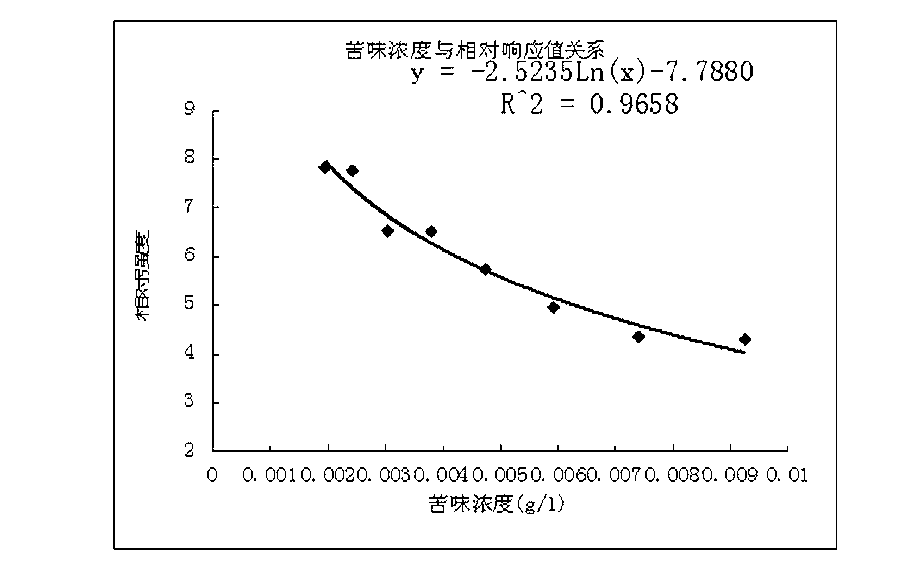Method for quickly detecting intensity of four basic tastes in liquid food by using electronic tongue
A technology of liquid food and electronic tongue, applied in the direction of material electrochemical variables, etc., to achieve the effect of good reproducibility, accurate data and standardized operation
- Summary
- Abstract
- Description
- Claims
- Application Information
AI Technical Summary
Problems solved by technology
Method used
Image
Examples
Embodiment
[0048] The electronic tongue device of the α-ASTREE liquid fingerprint analyzer is selected to perform self-inspection, judgment of sensor sensitivity and correction / calibration device, etc., and 0.01M hydrochloric acid is used to calibrate the sensor in the α-ASTREE electronic tongue device to ensure that the acquired Data is reliable and stable.
[0049] Take 20 ml of each sample containing 2.00 g / L, 1.40 g / L, 0.98 g / L, 0.69 g / L, 0.48 g / L, 0.34 g / L, 0.24 g / L aqueous solution, pour into α-ASTREE In the special sample bottle of the electronic tongue detection device, the sensor in the electronic tongue detection device is cleaned with deionized water before measurement.
[0050] Perform sensor cleaning and perform data acquisition at room temperature. The time for each data collection is 120 seconds, and the experimental value at 120 seconds after stabilization is taken as the calculation data. Each sample is measured repeatedly 7 times, and the results of 4 times are taken f...
Embodiment 2
[0080] To compare the relative intensity of the basic taste perception of a group of juice drinks (numbered 1, 2, 3, 4, 5, 6):
[0081] The preprocessing of the electronic tongue sensor before the experimental work is debugged according to the operation steps of the ASTREE taste fingerprint analyzer. The purpose is to optimize the parameters of the electronic tongue before the test and ensure the accuracy and stability of the experimental data. The stability of the activated sensor is mainly strictly evaluated by the calibration process. The main purpose of sensor calibration is to adjust the response signal of each sensor to the test range of the system, so as to achieve the maximum limit for each sample without the occurrence of the signal. for accurate measurement.
[0082] (1) Electronic tongue sensor activation
[0083] Two steps constitute electronic tongue sensor activation: one or both of active activation and passive activation can be selected. Passive activation: W...
PUM
 Login to View More
Login to View More Abstract
Description
Claims
Application Information
 Login to View More
Login to View More - R&D
- Intellectual Property
- Life Sciences
- Materials
- Tech Scout
- Unparalleled Data Quality
- Higher Quality Content
- 60% Fewer Hallucinations
Browse by: Latest US Patents, China's latest patents, Technical Efficacy Thesaurus, Application Domain, Technology Topic, Popular Technical Reports.
© 2025 PatSnap. All rights reserved.Legal|Privacy policy|Modern Slavery Act Transparency Statement|Sitemap|About US| Contact US: help@patsnap.com



